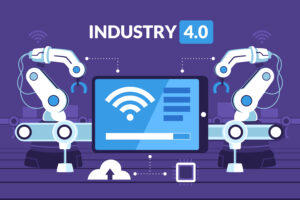MRSP: PHL mechatronics industry trails behind Industry 4.0

The Mechatronics and Robotics Society of the Philippines (MRSP) said that some manufacturing plants remain static despite government efforts to push for the fourth industrial revolution (4IR).
“We’re still not there yet,” MRSP Vice President for Mechatronics, James Bernard C. Itao, told BusinessWorld in an interview on Wednesday.
“Actually, there are still manufacturing plants, food manufacturing plants that are still in the second or third industrial revolution,” he added.
I4.0 or 4IR is the emergence of digital technologies and smart use of information and communications technology (ICT).
“Businesses and supply chains already use some of these advanced technologies,” software group Systems Applications and Products (SAP) said on its website. “But the full potential of Industry 4.0 comes to life when they’re used together.”
According to SAP, big data and artificial intelligence (AI) analytics, horizontal and vertical integration, cloud computing, augmented reality (AR), the industrial internet of things (IIOT), additive manufacturing or 3D printing, autonomous robots, simulation, and cybersecurity are the main technological pillars of the revolution.
A 2021 report by the Department of Science and Technology – Philippine Council for Industry, Energy and Emerging Technology Research and Development (DoST-PCIEERD) said that $3.7 trillion is the estimated value that will be created by Industry 4.0 (I4.0) technologies and processes for manufacturers and suppliers in 2025, only 30% of companies nationwide are using I4.0 solutions.
The DoST noted that the lack of knowledge about new technologies, economic and financial concerns, the lack of skilled workers, and other socio-cultural and organizational issues are some roadblocks that hinder the technological advancement of micro, small, and medium enterprises (MSMEs).
Brain drain and job mismatch in the mechatronics industry are also contributing to the slow progress of the industrial revolution.
“Brain drain is really true. If they go abroad, they will get paid much higher,” Mr. Itao said.
“We have to train the right people and equip them with the right skills.”
Mr. Itao added that Filipino engineers and technicians are highly in demand abroad because of their good character, skills, and knowledge.
Preliminary data from the Department of Migrant Workers (DMW) revealed 1,439 new technicians and associate professionals, and 2,113 new plant and machine operators and assemblers were deployed overseas in January 2025.
“Many of us who are abroad, who are practitioners, can keep up with other (foreign) engineers,” Mr. Itao said. “Actually it’s one of the most sought-after nationalities abroad. They look forward to working with Filipinos.” – Almira Louise S. Martinez











